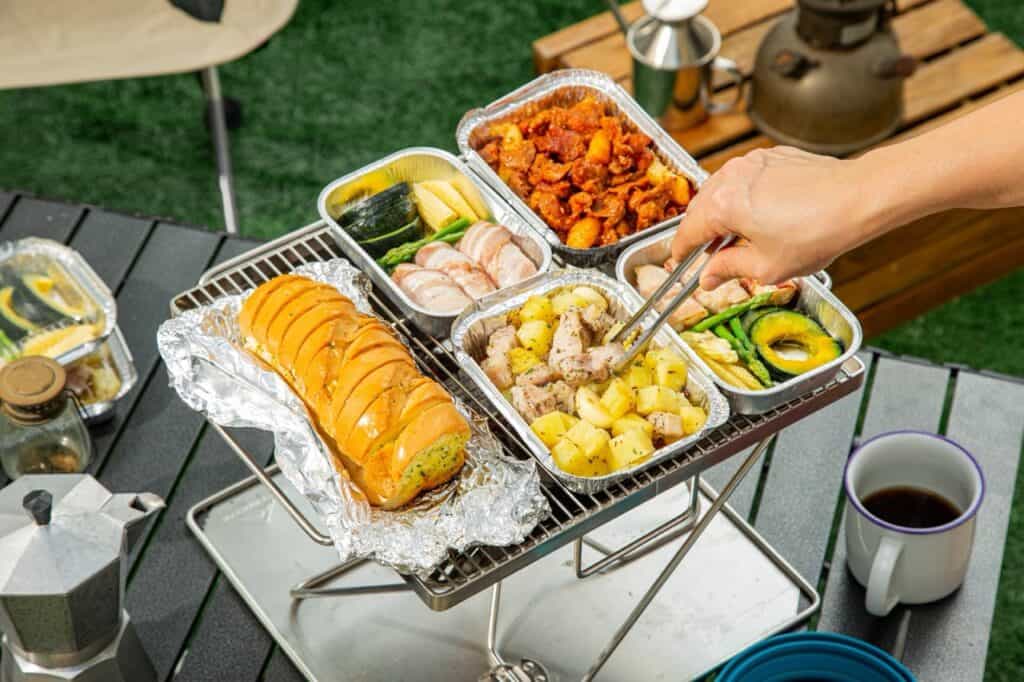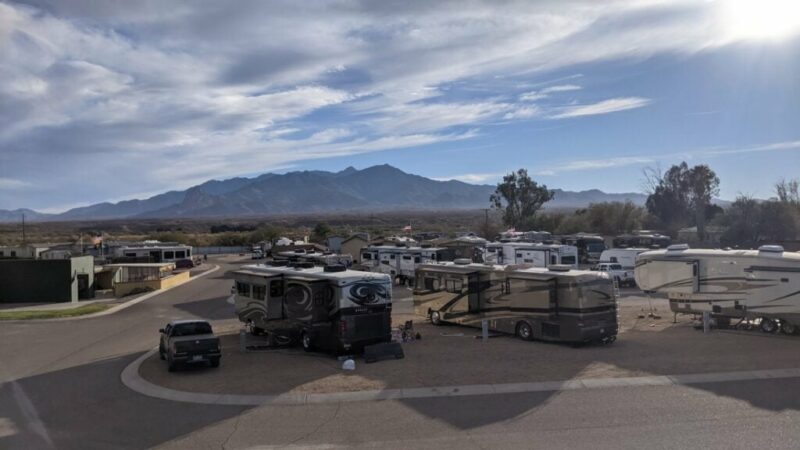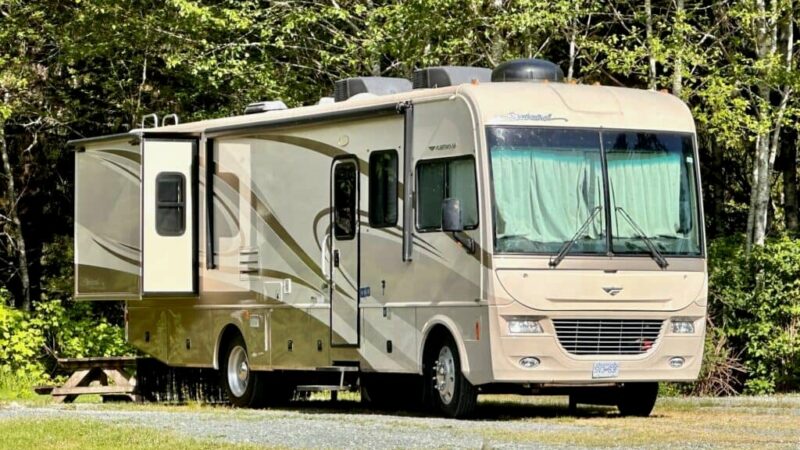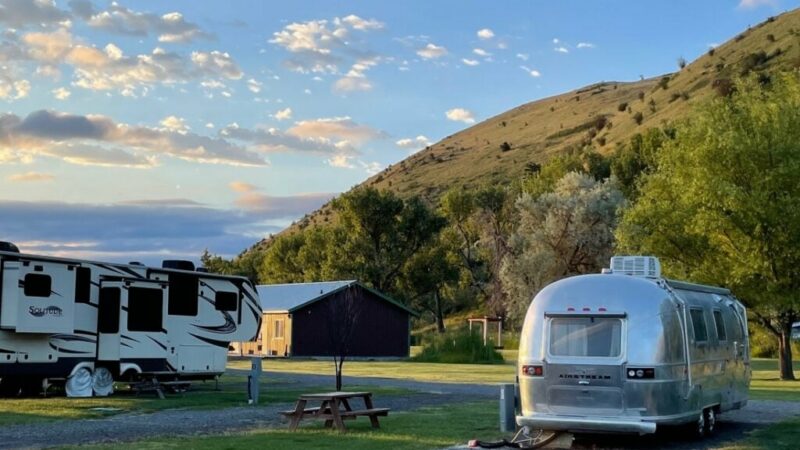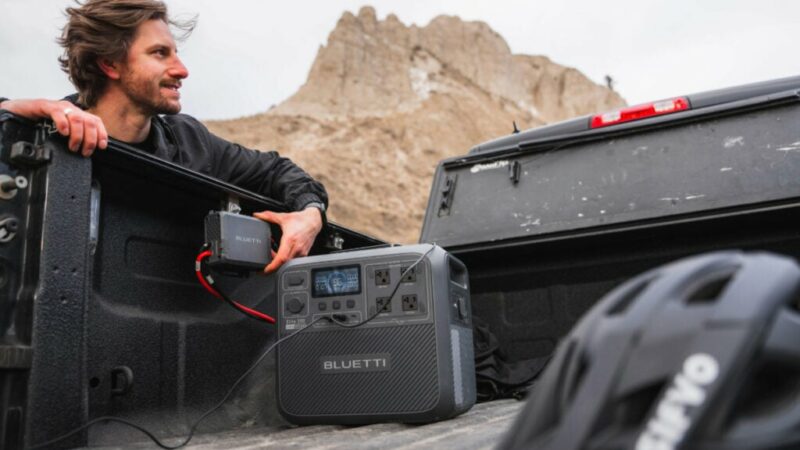How to Build the Perfect Outdoor RV Kitchen Space
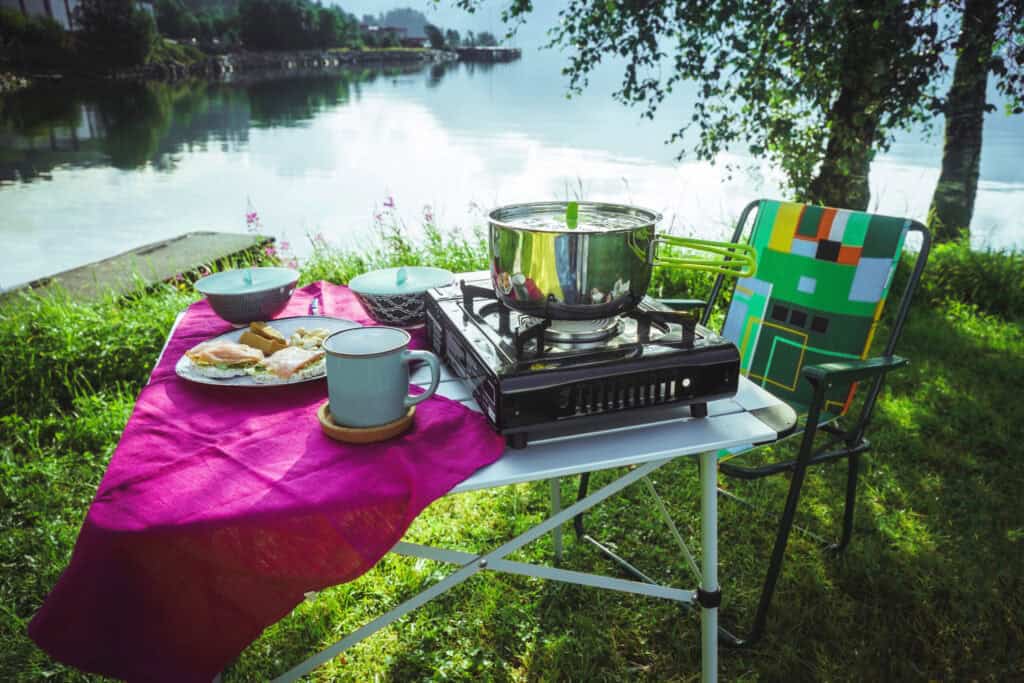
Make a DIY Outdoor Kitchen For RVing!
The joy of dining alfresco by the campfire and showing off cooking skills on a nifty portable outdoor kitchen is a head turner. Camping doesn’t have to be just hot dogs! Now is the time get creative if you are stuck in the franks and burgers rut.
An often-underrated characteristic of camping is showing off … “campsite attitude”. Awnings with cheesy lights overlooking numerous chairs set at just the right angle alongside small folding tables is expected.
However, when you break out your portable outdoor kitchen and set that up, passerby campers will slowly linger to soak in your campsite attitude. Time to level up!! Lead with the unexpected. Let your smoking grill and sizzling pans lift mouthwatering aroma into the air.
Build on what you have
Look at what you have and then decide what you need for a portable outdoor kitchen space for RVing. Do you already have an outdoor cooking space for your rig, or will you need a bottom-up build? While adding to an existing outdoor kitchen makes things easier, there is always room to improve efficiency, productivity, and organization.
In the event you create a true portable outdoor kitchen, there are practical solutions to inspire a design to compete with a standard OEM outdoor RV kitchen. In the long run, a well-designed portable outdoor kitchen wins the campsite attitude award.
Getting started
Setting brands aside, just know there are hundreds of choices. These suggestions are meant to get you started. Fit these suggestions to meet your needs of portable, handy, transportable, convenient, compact, and light.
- Standalone camp kitchen/cook station
- Fridge/cooler
- Camp stove/grill
- Collapsible dishpan/bucket
- Tablecloths
- Pots and pans
- Cooking utensils: tongs, spatula, big spoons, etc.
- Knives
- Cutting board
- Lighting for the cooking area
- A way to clean-up: water source to wash, rinse, and dry
- Organization for utensils and napkins: ideal portability for inside/outside use
- Stable and level spot for heavier things like the grill and cooler
- Critter proof from small to large animals to tiny bugs and flies
- Available space to not only prepare but also comfortably sit down and enjoy
Priorities and finances drive the design plan for your portable outdoor kitchen. Given these points, be on the lookout for items that are simple, affordable, and lightweight (without compromising support).
Level up Your RV Cooking Menu
Having a menu and thinking about what you need to take and store for meals is your starting point. If your camping style is weekend camping, the menu can be simple, storage easier and clean up a breeze. However, if you are out on an extended trip, Make adjustments and find the right features for you.
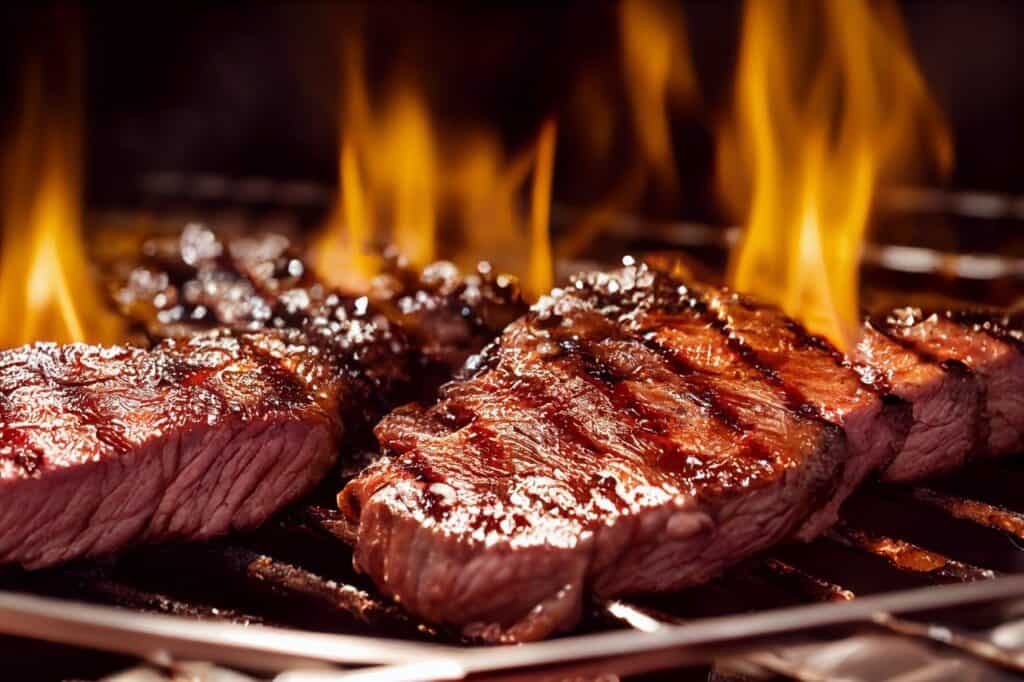
Again, priorities (your camping style) and finances drive the plan. Don’t fall for a base build centerpiece that looks great on your computer screen. In this case, you need to go and look at it. In fact, really size it up.
For this reason, firsthand examination will show you exactly what it looks like, how well made it feels, and how easy or difficult it is to not only break down, but to move around once broken down.
Simple, durable, stable, affordable, and lightweight without compromising support. To repeat, don’t fall for a base build centerpiece without seeing it in action.
What is the right size for an Outdoor RV kitchen?
Even though campgrounds supply onsite picnic tables, be aware of the sanitary hazards that come along with them. That being said, your own outdoor portable RV kitchen provides another layer of hygiene security.
Consider a base unit that is large enough but not too big or heavy. However, it also needs to be easily leveled and sturdy enough to handle the weight of food prep, cooking, clean up, and setting things aside.
Consider space needed for the type of propane or coal fired grill you use, pots and pans, and that air fryer or slow cooker. Food prep takes up space for a cutting board, numerous utensils, bowls, pots, and pans.
Again, consider your camping style. What are your RV usage habits? Extended-use Rvers like snowbirds use their RV as an escape from the weather for half of the year. Thus more attention is given to elaborate meals.
On the other hand, casual campers get out a few weekends a year. While meal prep is still necessary it may not require an elaborate portable outdoor kitchen set up. As can be seen, camping styles, cooking skills and personal food preferences are directly tied.
Having a menu and thinking about what you need to take, store, and have on hand is your starting point. In other words, if your camping style is weekend camping trips the menu can be well-organized and done on a modest portable outdoor kitchen. You can virtually do a simple fold-out side table and prep inside.
Which base is the right one for you?
There are in fact many ways to fit various types of base units to meet your needs. Your choices span from too large, too small, and too bulky to streamlined, and just right.
Here is what to look for:
- High weight limit
- Sturdy materials like aluminum frames (not plastic)
- Legs that lock in place
- Four individual feet instead of two
- Heat-resistant Tabletop
Portability
For the most portable outdoor kitchen for RVing, you’ll want to look at the weight of the camping kitchen, how small it folds down and whether it has handles. The better ones have some weight to them and are of course harder to lug around.
Yes, setting up a portable outdoor camp kitchen can be as simple as extending telescoping legs, snap the top on, unzip a few compartments and stash your stuff.
On the other hand, some models come with shelves, racks, cubbies, lantern hooks, and nooks and crannies to stash food, utensils, and organize cookware.
Dig In!
Easy set up. Sturdy. Portable. Organized. And the best part—you aren’t spending an hour or two setting up and tearing it ALL down. Make no mistake, the tear down after a long stay is worse that the set up. Bottom line: having the right tool for the job to build a portable outdoor kitchen for RVing will make cooking easier, simpler, and more fun. This is a highly rewarding project that anyone can do.
The post How to Build the Perfect Outdoor RV Kitchen Space appeared first on RV LIFE.
